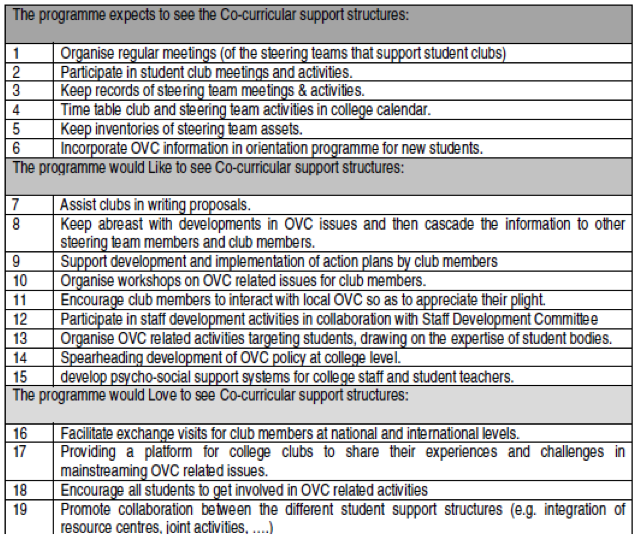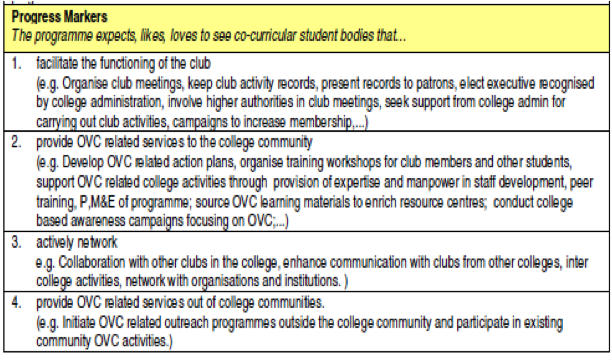Outcome Mapping Practitioner Guide
Simplifying heavy intentional designs (reducing numbers of progress markers)
How a heavy intentional design was simplified and made more practical by grouping progress markers into broader progress marker categories hence reducing the number of progress markers to be monitored.
Author: Jan Van Ongevalle
Published: Sunday 21 September 2014
Recognising the challenge of a heavy intentional design.
VVOB’s Teacher Education and Child Vulnerability Programme has 10 boundary partners. This presented the programme implementation team and its boundary partners with two practical challenges:
1. Seven boundary partners are departments within eleven teacher training colleges the programme is working with. This gives a total of seventy seven boundary partner groups in different locations in the country.
2. Rather long lists of progress markers and support strategies were developed for each boundary partner during the initial outcome mapping workshops.
These two challenges contributed to an unattractive and heavy intentional design and monitoring system that had the risk of being unpractical.
Making the intentional design more practical
The intentional design was adjusted in three major ways to make it more practical.
1. The various progress markers for each boundary partner were categorised in major categories that emerged during the analysis of the baseline survey. This reduced the number of progress markers and also made the progress markers more comprehensive descriptions of process behaviours which are easier to monitor over time.
2. The strategy maps were realigned to the programme’s intermediate result areas. This reduced the long lists of strategy maps and removed overlaps between identical support strategies for different boundary partners. (intermediate result areas were identified during the development of the programme’s mission and provide a results monitoring framework which is a requirement for the donor and local authorities).
3. Organisational practices were included in the support strategies and are aligned to a specific intermediate result area on organisational learning at the level of the implementing organisation and the boundary partners.
The tables below illustrate how the initial set of 19 progress markers for one of the boundary partners (i.e. co-curricular support structures) was reduced to 4 broader progress marker categories. The original progress markers that were grouped in a specific category are then listed under each category between brackets as examples of possible changes that may be observed within that particular progress marker category. The full adjusted intentional design can be found at http://www.outcomemapping.ca/resource/making-the-intentional-design-more-practical.
Initial set of Progress Markers

4 Progress Marker categories

This nugget was applied in: VVOB - Teacher Education and Child Vulnerability Programme (2008-2013), Zimbabwe
Related Practitioner Guide sections:



